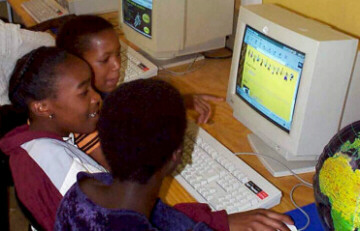| What is thinking? |
|
"Part of the perceived need to teach thinking skills has come from a growing awareness that society has changed and skills appropriate a generation ago may no longer prepare students for the world beyond school........This means that schools should be less focused on imparting information than on teaching children to learn and think for themselves." Robert Fisher. New Learning Frontiers, October 1999 There are many aspects to thinking. As you read earlier in this module, there are different categories of thinking skills. Thinking can be lateral, constructive, creative, mediated and critical. But as you may imagine there is a connection and much overlap between all of these kinds of thinking. Just click on the links to read more about the theories and the people who developed them. Creative thinking and Lateral thinking help us to generate alternatives and to view all aspects of a problem. Lateral thinking is sometimes interchangeable with creative thinking; both are used to describe unusual ideas, closely associated with problem-solving. If you follow the link to lateral thinking you will also find the Six Thinking Hats method of problem solving. Constructivist thinking helps us build ideas and knowledge. Critical thinking helps us think more deeply about a problem and evaluate information. In this module we focus on a few skills that encourage creativity and inquiry in learners. We also hope to encourage the sort of thinking skills that allow learners to plan and to solve problems. All of these skills must be developed in order to use computers and the Internet more effectively in our curriculum, especially if we progress as far as telecollaborative project work.
"The effective teacher steps in at the right time - intervenes to bring about a burst of newly directed activity." "Effective teachers ask students to reveal their patterns of their thinking. "How did you come up with that answer?" they ask." Jamie McKenzie Beyond Technology It is only once we have developed independent thinkers that we can start to introduce collaborative class activities. The information and communication aspects of the Internet will become a much-needed resource if there is a spirit of inquiry in the classroom. Remember that the computer is a resource and a tool and that it offers more other than word processing, administrative uses and other similar programmes. "Learning is not seen as the gaining of new facts and not even the accumulation of new thinking skills but it involves a complete change in the cognitive structure (thinking process) of the learner, enabling her to perceive the world in new ways and even more importantly to operate upon the world in new ways" B Wallace-Adams, 1993. Creative thinking can involve a number of skills that teachers can use, such as brainstorming, outlining, planning concept mapping and spider or web diagrams. We are now going to use these skills in our classrooms. The mind is like a muscle that develops with use. The good news is that all thinking processes can be trained and developed. Posing problems will allow your learners to practice using their thinking skills in fun situations so that their creative thinking skills become more fluent. Have a look at these creative thinking exercises with your classes. Try some of them out just for fun with you classes or after hours if you have the opportunity.
|
